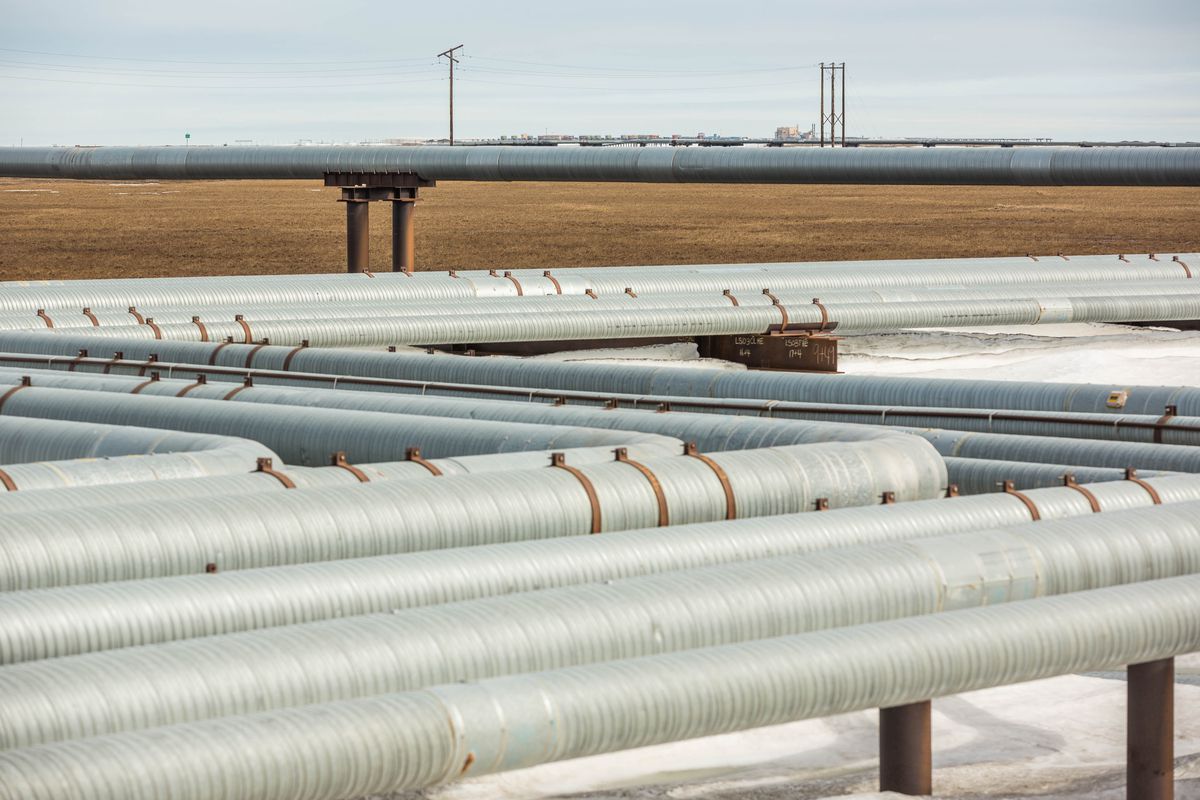Permafrost thaw prompts emergency orders from Alaska regulators over pipelines concerns

Concerned that thawing permafrost might contribute to another oil and gas leak such as the one that BP experienced in April, Alaska oil-well regulators on Monday issued emergency orders to oil companies to provide details for a widespread review of all North Slope wells.
The Alaska Oil and Gas Conservation Commission is concerned that wells with similar construction to that Prudhoe Bay well will be damaged if permafrost thaws too much, causing the ground to subside and put dangerous pressure on pipes carrying hot crude oil.
In a series of orders issued on Monday, the agency asked all North Slope operators with similar well designs to temporarily shut them down and provide a list of such wells by Dec. 31.
The number of wells with similar designs is expected to be small, said Hollis French, AOGCC chair.
Extra pressure on the well
The leak on April 14 at the Prudhoe Bay well was caused after permafrost, melted from hot production fluids, caused the ground to sink and put extra pressure on the well, BP said in reports to AOGCC about the incident. BP operates the Prudhoe Bay field.
The wellhead and valve assembly suddenly jacked up 3 feet and struck the roof of a well house, causing damage to equipment that led to the uncontrolled release of oil and gas.
The key problem with the construction of the well, one of Prudhoe Bay’s original old wells, was that it was anchored to permafrost, rather than more stable rock, said French.
BP has indicated such well designs are rare among the 1,700 wells at the Prudhoe Bay unit, the largest field on the North Slope. After the leak, BP shut-in 14 of the “highest risk” wells with similar designs, including five that produced oil at the time of the leak.
5 major leaks this year
The April leak lasted for three days and was one of five major leaks experienced this year by BP on the North Slope, leading the company earlier this month to refocus efforts on training and procedures.
BP estimated that 63 gallons of crude oil were released in the April leak, along with nearly 100,000 pounds of natural gas.
Cathy Foerster, an AOGCC commissioner, said Monday the April release cannot be blamed on global warming.
“A local issue”
Downward pressure on the outer pipe caused by the subsiding permafrost, and upward pressure on the inner piping from thermal expansion, created opposing forces that caused the damage, said Foerster.
“The phenomenon causing this problem is purely a local issue,” she said. “It’s heat transfer between hot well fluids and cold permafrost.”
Last week BP delivered a final report about the April leak to AOGCC, following the company’s investigation.
AOGCC met with BP officials on Thursday. The agency learned the company did not inform all North Slope operators about the results of its investigation, as AOGCC had asked, Foerster said.
Because that wasn’t done, the agency issued the orders Monday.
Related stories from around the North:
Finland: Nord Stream 2 applies for Finnish building permit to build gas pipeline, Yle News
Norway: A century of Norwegian coal mining in Svalbard comes to an end, The Independent Barents Observer
Russia: Gazprom sends rig from Black Sea to new Arctic drill site, The Independent Barents Observer
Sweden: Swedish mining company in court over toxic waste exported to Chile in the 1980s, Radio Sweden
United States: U.S. transportation secretary announces efforts to speed up project development in Alaska, Alaska Dispatch News



